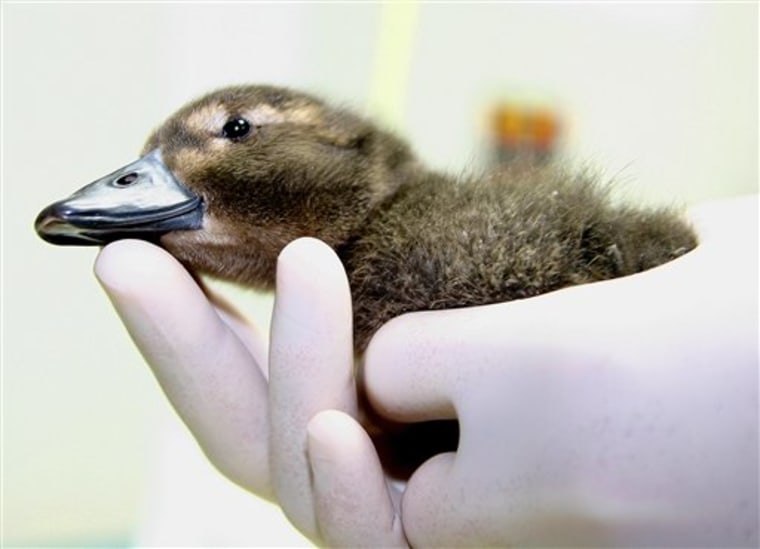Maybe it was the private room with soft moss for nesting, or the duck penthouse about 8 inches off the ground to simulate the raised ridges upon which Steller's eiders like to breed in arctic Alaska, or the older guy who had done some living on the wild side.
Whatever it was, this girl got busy.
She laid a whopping 23 eggs in two clutches, proving that Steller's eiders can successfully be bred in captivity.
"She laid quite a few more eggs than expected," said Tuula Hollmen, research associate professor at the University of Alaska Fairbanks and head of the eider research program at the Alaska SeaLife Center in Seward. "I was thrilled."
When aviculturist Mike Grue first spotted the olive-green egg in one of the center's breeding pens, he thought a colleague was playing a joke on him. For three years, center aviculturists had been trying a variety of techniques to get their Steller's eiders in the mood.
When Grue showed the green egg to Heidi Cline, the center's avian curator, Cline didn't believe it was real either, Cline said. It didn't look like the Steller's eider eggs she'd seen. It was too long and the wrong color.
"I thought someone was messing with me and may have moved an egg around from one of the other birds," she said.
About 24 hours after the first egg was discovered, the mystery was revealed.
"When I checked her, you could actually see she had another egg coming. You could see the bulge," Cline said.
11 of 23
The female duck, called Scarlet, ended up laying nearly two dozen eggs; only one hatched. The duckling, called Solo, was egg No. 11. She was hatched on July 15.
"This Solo has been a real pleasure. She has been a happy, adaptable, easygoing duck from the start," Cline said.
Steller's eiders in Alaska are listed as threatened under the federal Endangered Species Act. SeaLife Center scientists believe this is the first time one of them has been successfully bred in captivity in North America.
Hollmen said in the wild females will lay a clutch and then incubate the eggs. But in this case, Scarlet — considered a young mother at 2 — wasn't much interested in sitting around.
"We took care of the incubation for her," Hollmen said.
About 27 days later, one duckling was born. When Scarlet showed no interest, the duckling was placed in foster care with another Steller's eider.
"She started showing all the kinds of behavior of herding the duckling around, like a mother would," Hollmen said.
Recipe for success
Researchers increased the time the two spent together. They knew they had succeeded when the foster mom plucked out some of her breast feathers to expose a warm patch of down to keep the duckling warm at night.
"She started taking the duckling up under her wings and taking the duckling into the down to keep warm," Hollmen said. "That was just wonderful."
Hollmen said researchers aren't sure why Scarlet hit it off with Mr. Wing, the duck who impregnated her. Cline said maybe the chemistry was right because Scarlet was a young, captive-reared bird who became enamored with Mr. Wing, who was born in the wild.
"He may have wooed her," Cline said. "He has probably fathered ducklings before in his life."
The duckling is providing valuable information to scientists working on a recovery plan for Steller's eiders. The birds face multiple threats ranging from ingestion of lead shot left over from hunting to eggs and ducklings being eaten by foxes, ravens and other predators.
Hollmen said even in the heart of Alaska's breeding grounds no nests were found between 2001 and 2004. Most of the breeding by Steller's eiders now is in Russia, where there are up to an estimated 220,000 birds along that country's Arctic coastline.
In Alaska, the breeding range has shrunk to one area near Barrow in northernmost Alaska. Scientists estimate there are anywhere from a few hundred to a few thousand Steller's eiders on the Arctic Coastal Plain near Barrow. The birds are nearly gone from western Alaska, where nesting pairs used to number in the thousands.
The U.S. Fish and Wildlife Service has implemented a recovery plan.
